The 6 Most Horrifying Ways Anyone Ever Made Money
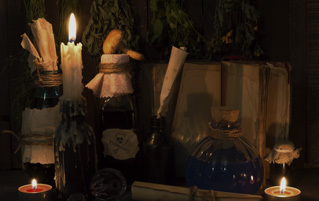
The thing about slasher-movie villains is that they can't help it -- Jason Voorhees and Michael Myers clearly have something wrong with their brains, and the little girl from The Ring just wants out of that well. The real world, however, offers something much scarier: people who do mind-bogglingly gruesome things just to make a quick buck. For some reason, we'd actually feel better if the people on this list did what they did because a demon in their head told them to.
John George Haigh Dissolved People in Acid and Stole Their Identities

While serving time in prison for fraud, con-artist and professional labor-avoider John George Haigh came to the life-shaping realization that "there were easier ways of making a living than to work long hours in an office," which somehow translated to: "I'm going to murder bunches of people and plunder their finances." To be honest, that actually seems way more difficult than getting a job at GEICO.
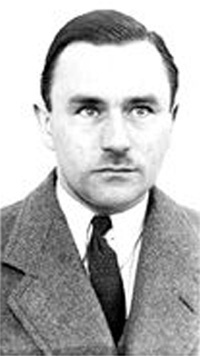
"Lizards creep me out."
During his stint in the big house, Haigh stumbled onto the legal concept of corpus delicti, which basically means that you can't be arrested for a crime if there's no proof that crime has been committed. Haigh, being both the opposite of a lawyer and a person with more deviousness than sense, interpreted this to mean that he couldn't be arrested for murder if there was no body. By that same logic, a person couldn't be arrested for robbery if they spent all the money they stole (see "the opposite of a lawyer," above).
As soon as he got out of jail, Haigh put his spectacularly flimsy theory to the test by murdering several wealthy business owners, drinking a teacup of their blood (in addition to being stupid and lazy, Haigh was also as daffy as a shithouse rat), and dissolving their remains in acid and pouring them down the bathtub drain. After the deed was done, he would use his skills as a forger to take over his victims' businesses, using their personal wealth to finance his suddenly high-class lifestyle of fast cars, expensive hotels, and incredibly strong bathtubs.

60 percent porcelain, 40 percent entrails
In spite of Haigh's unconventional source of tremendous income, he was still spending more than he was making, and he had to keep melting rich people to make ends meet. He'd drank at least six teacups of blood and dumped as many bodies into acid before the police finally noticed a connection between all the missing upper-class and Haigh's rapidly growing wealth, and they arrested the shit out of him.
During his interrogation, Haigh predictably resorted to his "if there's no body, there's no murder" defense, to which the police offered the powerful rejoinder, "That's not what corpus delicti means, dumbass." Despite his ghoulish body-disposal strategy, Haigh had kept more than enough of his victims' personal belongings to put his head in a noose. We assume they also put a stake through his heart and buried him in a ring of salt just to be sure.
Reality TV Host Allegedly Arranged Murders to Boost His Ratings

The idea of an evil media baron organizing murders to boost his own ratings is such a Bond villain scheme that it was actually the plot of a James Bond movie. However, it's also the real-life story of Wallace Souza, a Brazilian TV personality whose popular true-crime show was fueled by an ongoing series of gruesome murders that were apparently orchestrated by Souza himself, in order to hang on to his much-envied prime-time slot. If nothing else, that's cheating.

Getting rid of the "C" and the "R" would have been a much simpler way to get a bump.
Souza, a former police officer, was the host of Canal Livre, a Hard Copy-type show that was hugely successful due in no small part to the fact that they always seemed to get their hands on exclusive footage of grisly crime scenes. In fact, not only did Souza's camera crews beat rival TV shows to the scene of outrageous crimes, they often arrived before the police did. As you might imagine, the police found this suspicious.
Realistically, there were only two possible explanations for Souza's crews getting the scoop on these crimes so quickly -- either Souza had an inter-dimensional psychic on his payroll, or he had some inside knowledge of the killings. The cops went with the latter and began investigating Souza's precognitive television program. They arrested a former bodyguard who claimed that he had committed at least one brutal murder at Souza's request so that it could be covered on Canal Livre, and when they raided Souza's house, they discovered he owned more assault rifles than pillows.
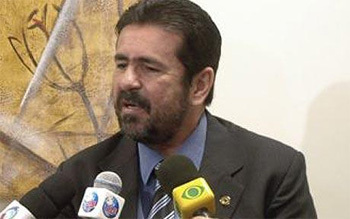
They couldn't just arrest him, though. First, they had to remove him from the state senate.
Souza turned himself in, protesting his innocence and insisting he'd been framed by one of his rivals, presumably Dennis Farina from Unsolved Mysteries. Unfortunately for justice, Souza was hospitalized with liver disease shortly after his arrest and died before he could go to trial, so the circumstances behind his criminal enterprise remain unresolved. One can only imagine the ratings boost he would have received reporting on his own trial.
Elmer Wayne Henley Sold Victims to a Serial Killer

What's scarier than a serial killer? If you answered, "A serial killer who also has wizard powers," we would agree but then revise the question to: what real thing is scarier than a serial killer? The answer is: a team of them, working together. It's one thing for a mentally ill loner to start carving up victims; the idea that he could convince other people to help him do it is somehow 10 times worse. That shouldn't be a thing.

Now imagine a serial killer who convinces wizards to kill for him ...
That brings us to Elmer Wayne Henley, who was a struggling high-school dropout in the 1970s trying to make ends meet. Because he was something of an unscrupulous fellow, he and his friend David Brooks began working for a local candy store-owner named Dean Corll, but not stocking the shelves or reordering Twizzlers -- Corll had a thing for killing teenage boys, and Henley's job was supplying him with victims.
You see, Corll realized there were easier ways to procure victims than skulking around the neighborhood in a ski mask, and was apparently blind to the irony of the fact that he owned a candy store, so he outsourced his stalking to Brooks, who brought Henley in on the deal. In all fairness, at first Henley didn't know Corll intended to murder the teenage boys he was rounding up -- he was under the impression that Corll was merely running a sex-slave trade. Also, Corll was paying him $200 per victim, so Henley wasn't interested in digging too deep. And $200 in the '70s was like $400 in the '90s, which means he was trading these people for the equivalent of two brand-new Super Nintendos -- more than enough to make a teenage burnout look the other way.
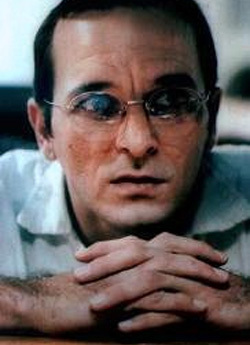
"Plus the victims get free candy, so lucky them." -Henley, probably.
Over the next three years, Henley and Brooks supplied Corll with 27 youths that we're aware of. It eventually got to the point where Henley was selling his own friends to the Candy Store Murderer to finance his recreational drug habit, because friendship is nice, but drugs and money are drugs and money.
Their arrangement came to an abrupt end when Henley made the mistake of bringing a girl to a paint-huffing party at Corll's house. Corll freaked out and tried to kill everyone in the room, but Henley managed to get Corll's gun away from him and shoot him.

This made him a model citizen, just like Dexter.
Although he was initially treated like a hero, things changed when Henley idiotically mentioned to Tim Kerley, one of the people he'd just rescued, how much money he could have made selling Kerley to Corll instead of saving him. Kerley understandably found this statement to be thunderously suspicious, so he informed the police, who quickly unraveled the long-standing business arrangement between Corll, Brooks, and Henley. The two teenagers were rewarded with life sentences, a phrase here meaning "decades of regret over not just getting a job at Burger King."

John Mullowney: Priest Hunter

John Mullowney was a petty crook and drunkard in 18th-century Ireland who had been condemned to death for stealing a horse, which was a capital offense back in those days. However, the British (who were controlling Ireland at the time) were having trouble enforcing their recent ban on Catholicism, so they decided to cut him a deal -- Mullowney could go free if he agreed to track down renegade Catholic priests. The crown's standing bounty on clergymen was 100 pounds per bishop, 20 pounds per priest, and 10 per monk (monks were apparently barely worth the ink their bounties were signed with). Presented with the choice of staying in prison and being executed or going free to assassinate ministers for booze money, Mullowney unsurprisingly picked the latter.
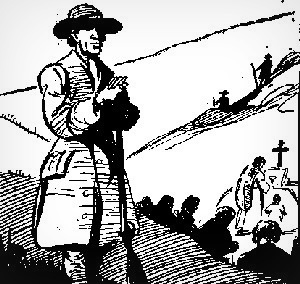
"If they'd paid me in booze directly, the choice would have been even easier."
He soon earned the title Sean na Sagart (John of the Priests), presumably because The Vicar Kicker and The Basher of Bishops were already taken. Mullowney relied on chicanery and deviousness to ensnare his victims, including convincing his devoutly Catholic sister that he was dying and having her fetch a priest to hear his final confession. When the trusting padre leaned in to hear the confession, Mullowney sprang up and stabbed him to death. Ever efficient, Mullowney later crashed the man's funeral to try to kill another priest attending the service.
Mullowney was so good at priest eradication that he wound up with a price on his own head, because when your job consists of decapitating Catholic clergymen in Ireland, it makes you unpopular with everyone except the bartenders. He was eventually caught by a mob of outraged locals, who killed him and tossed his body into a lake. Considering his reputation, we wouldn't be surprised if he faked his death so that he could leap out of his coffin during his funeral and claim one final bounty.
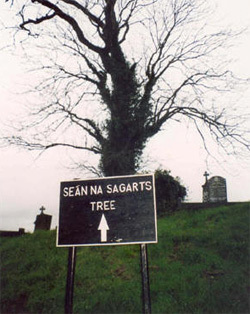
R.I.P. Sean na Sagart. Your soul now rests where no priests dwell.
William Palmer Poisoned Everyone He Knew for Insurance Money

William Palmer was a doctor in the 1800s in the town of Rugeley, England, who found himself plagued by money problems in spite of his high-paying profession. This was due to a chronic gambling addiction, combined with his being incredibly bad at gambling. To combat his suffocating debt, Palmer began poisoning everyone he could get his hands on.
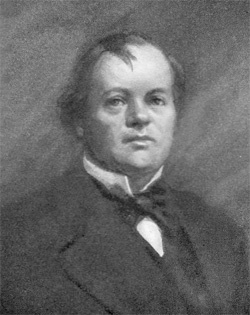
... aka "Putting them all on red."
Palmer's plan was embarrassingly straightforward. He began taking out bloated insurance policies on his various relatives and acquaintances, and then slowly poisoning them to death to collect the money. All told, he is believed to have killed around 15 people, including his wife, mother-in-law, and so many of his children we're amazed he was a real person and not a character in a Roald Dahl novel.
Eventually, the insurance companies (not the police) began to wise up to the fact that everyone Palmer took a premium on had a tendency to drop dead, and after his brother died, they refused to pay. Undeterred, Palmer switched targets to his pal John Cook, who actually survived Palmer's first murderous attempt. Despite literally telling people, "I believe that damn Palmer has been dosing me," Cook continued to hang out with Palmer until the doctor succeeded in poisoning him with a bowl of soup. Palmer was so bad at clandestine murder he was like a lazily written episode of Law & Order.
But an unusually riveting episode of Iron Chef.
The police finally decided enough was enough, and Palmer was arrested and subsequently hanged for the ridiculously brazen killings. The mad doctor had become so infamous that the people of Rugeley were concerned their town would always be associated with him, so they approached the prime minister to request they be allowed to change the town's name. The prime minister agreed, on the condition that they rename the town after him. Unfortunately, the PM's name happened to be Lord Palmerston, so the townspeople wisely decided to stick with Rugeley.
Matthew Hopkins: The Witch-Finder General Killed Over 200 Women

England in the 17th century was a place in which being accused of witchcraft was a legitimate concern, sort of like getting into an accident with an uninsured motorist today. However, there were some who heroically managed to profit from this whole situation, such as Matthew Hopkins, the self-appointed "Witch-Finder General" who made his living ridding afflicted communities of their various witch problems. He was the old-timey equivalent of a Ghostbuster, if the Ghostbusters were less concerned with busting ghosts and more concerned with feeding innocent women to hysterical mobs for money.
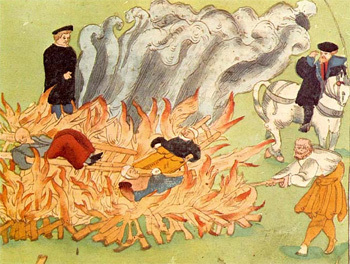
"There is no Dana, only fuel."
Hopkins would travel around from village to village, helpfully pointing out any possible witches in their midst. This included any persons exhibiting suspicious behavior, such as owning a cat or being a woman. Hopkins would then charge the villagers a small fee to have the witch removed before she could turn them all into toads or whatever the fuck these people thought was going to happen to them.
To determine whether or not an accused person was indeed a witch, Hopkins would subject them to a series of brutal "interrogations," including sticking them full of holes, making them walk around until their feet bled, and dunking them underwater to see if they would drown. Hopkins would then draw some vague conclusion from all that torture that allegedly proved the victim's witch-hood, and charge the villagers a ludicrous fee for the privilege of murdering one of their neighbors and/or family members for absolutely no reason whatsoever.
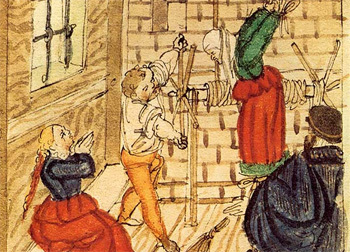
"Told you not to look at my husband, bi- uh, witch."
It's estimated that before his death in 1647, Hopkins executed over 230 "witches," more than all other witch hunters of the time combined. Considering the fact that witches aren't real, this essentially makes Hopkins the most prolific serial murderer in the history of the world. Now if you want to keep yourself up at night, consider this question: is it possible for a person to do what Hopkins did without knowing the witch thing was complete bullshit?
For more terrors that really existed, check out 5 Horrific Serial Killers (Who Are Free Right Now) and 6 Real Serial Killers More Terrifying Than Any Horror Movie.
Have some unscrupulous friends in need of employment? Click the Facebook 'share' button to spread some ideas.